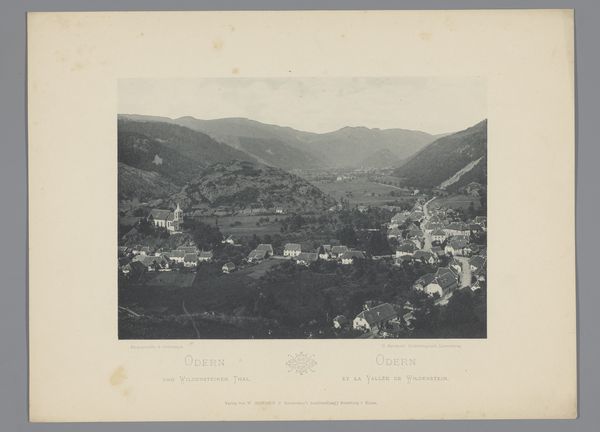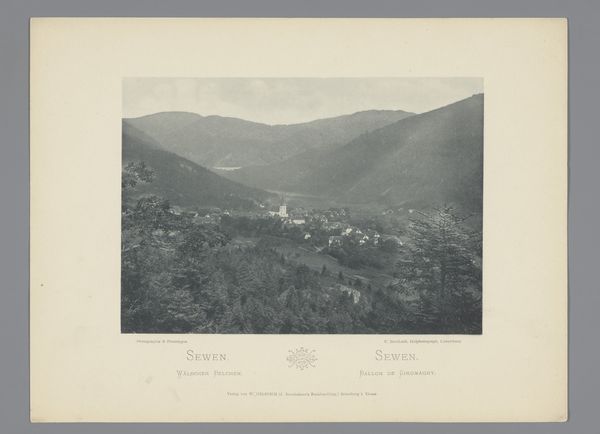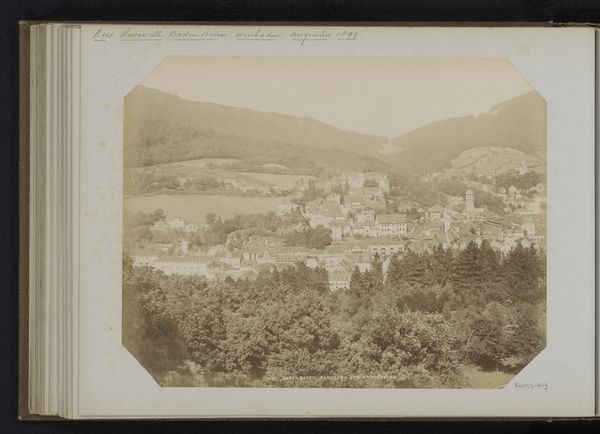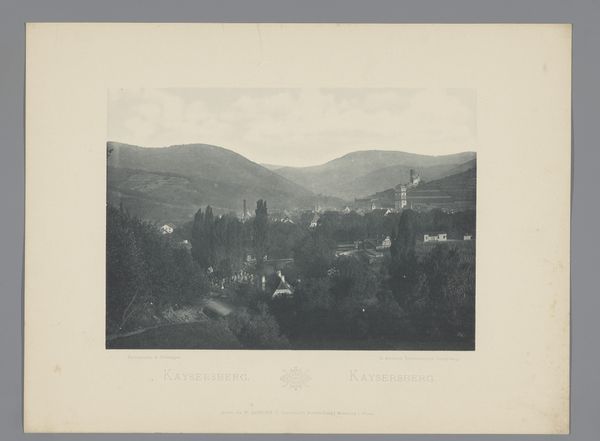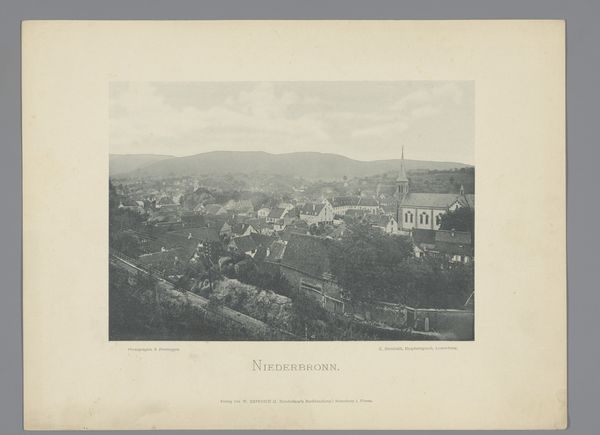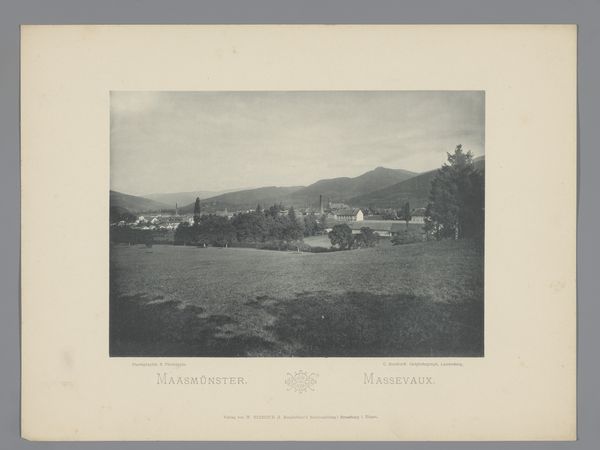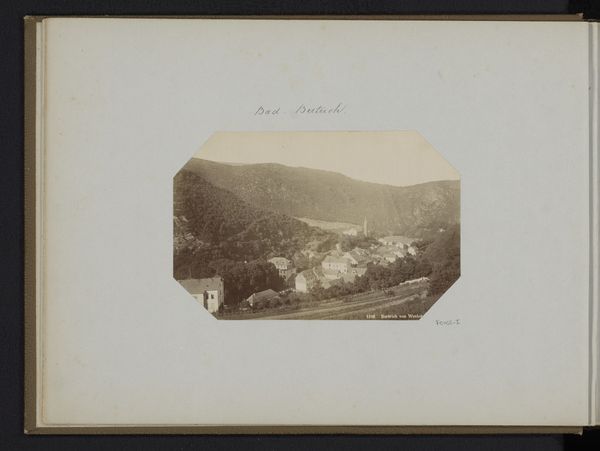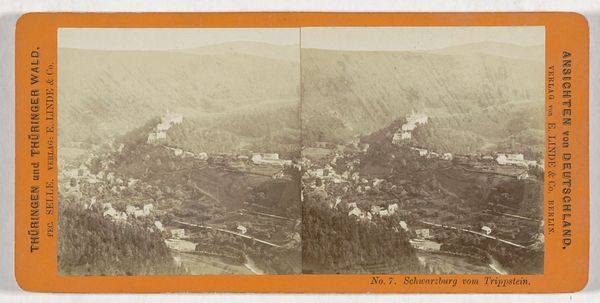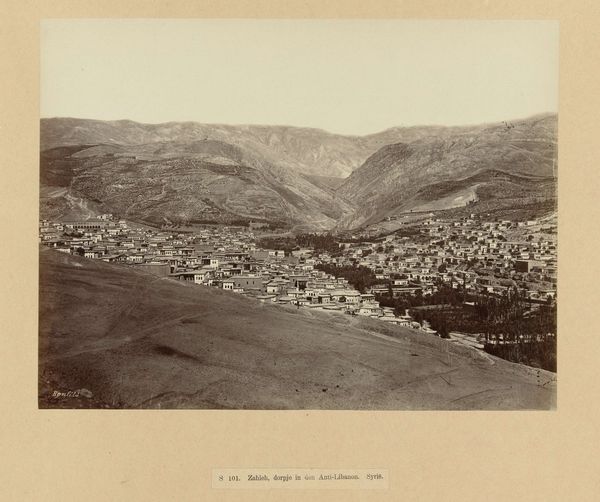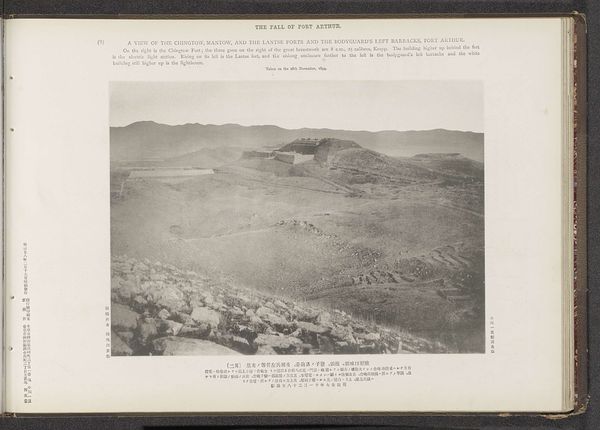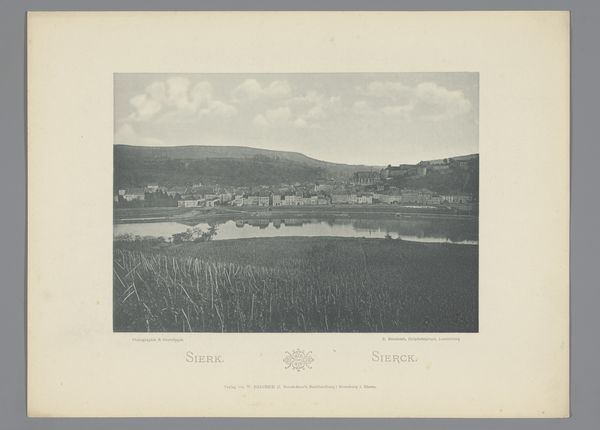
photography, gelatin-silver-print
#
pictorialism
#
landscape
#
photography
#
gelatin-silver-print
#
cityscape
Dimensions: height 154 mm, width 216 mm
Copyright: Rijks Museum: Open Domain
Curator: The piece before us, "Gezicht op Wesserling en de vallei van Saint-Amarin," or "View of Wesserling and the valley of Saint-Amarin" by Charles Bernhoeft, is thought to be created before 1894, crafted using a gelatin silver print. Editor: There's a peaceful melancholy here. That all-encompassing view, the way the town nestles into the valley as if seeking protection, the shades of gray...it all gives this sense of quiet watchfulness, doesn’t it? Like a visual elegy for a time we barely know. Curator: Pictorialism as a style emphasizes aesthetic beauty over documentary accuracy. The symbolic landscape represents not just a place but a mood. Do you see how Bernhoeft manipulates light and shadow to evoke particular feelings in the viewer? Editor: Yes! It's almost painterly. The sharp details of the village gradually dissolve into the soft haziness of the distant mountains. That transition mirrors memory, how clear recollections become dreamlike the further we travel back. What could the church spire signify here? It always stands so stalwart, doesn't it? A sentinel over the everyday, maybe? Curator: Often in Western art, especially of this era, a spire is read as aspiration, linking earthly concerns with spiritual ideals. But Bernhoeft’s vantage point changes the meaning: here, nature encompasses the religious and secular symbols. What sort of continuities do you see with modern landscape photography? Editor: Hmmm, there’s that desire to find these moments of sublime intersection where the hand of humanity is almost swallowed back into the organic world. Yet the very act of framing it, taking the picture, emphasizes the artificial boundary between us and it. Maybe that inherent tension is the key element passed down? Curator: I find that deeply resonant, it highlights a duality. Pictorialist images such as this show a world that the viewer may not readily recognize, reflecting not only the town’s identity, but its relationship with change itself, as we view it through modern lenses. Editor: So, maybe the quiet we feel gazing into it isn’t melancholy after all, but something closer to acceptance. We perceive things as they transform over time, never losing the core memory, just shifting the details ever so slightly. Thanks for lending a new point of view.
Comments
No comments
Be the first to comment and join the conversation on the ultimate creative platform.
